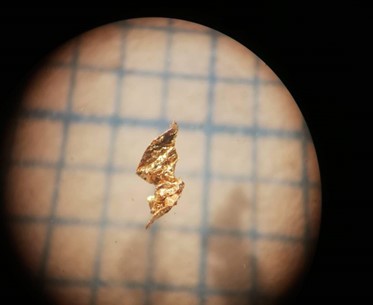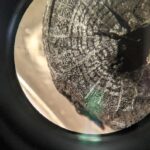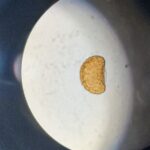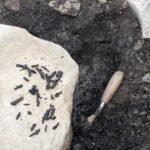It is a rare individual that knows from the beginning that they will become an archaeologist. I was not one of those individuals, it was quite coincidental that back when I was choosing my undergraduate degree there was a space for another talk on the open day timetable… and all that fitted was the archaeology presentation. But when I think about it now studying archaeology makes perfect sense, I grew up clambering over ruins that were the perfect setting for many imagined battles, I would listen to anyone I could telling stories of people that lived long ago and whenever I could be, I would be outside… trailing the metaphorical mud and twigs and fireflies (kudos if you get the reference!). So, archaeology was it, and I haven’t regretted a moment of the nonsense, so much so I have and will excavate in any conditions… this includes >30oc heat in the desert in Egypt, in storm conditions on the coast in a rapid excavation, less than <0oc on a steep slope and worst of all in clouds of midges in the Highlands that I swear momentarily blocked out the sun. But at the heart of it all, the why of archaeology is much deeper in meaning, because I am still telling stories, stories which allow a deeper understanding of who and how we became us, as a society, a community or an individual.
It is a good day when I get to see these kinds of specimens, perfectly carbonised oak charcoal, a perfect pollen grain, or indeed if the charcoal comes from the contexts in good preservation as at Swartigill Burn Excavation. Photo credit: Leia Tilley
Concerning the details, I completed my undergraduate Ancient History and Archaeology degree in 2019 and then a Masters of Research in Archaeology in 2022 both at the University of Durham. Both of these projects focused on understanding the impact of Prehistoric communities on environments within Scotland, through archaeobotanic, palynological and vegetational isotope mediums. Indeed, the MRes project made a significant data contribution to the understanding of plant-based taskscapes within Prehistoric lowland Scotland with publication of new data for the premium archaeological hillfort site of Traprain Law. The specialisms I have developed have meant that I have completed analytical reports for datasets in many different countries, in some instances travelling to collect this data personally. Indeed, in Egypt for example, I have aided in the processing of large numbers of samples for the site of Sa el-Hagar or Sais a Dynasty 26 (664-525 BC) capital city and incidentally… story time… I was the only individual to recover an artefact made of gold, picture included below, the scale is much exaggerated, the height of the Great Pyramid in paperwork for it was not.

I have presented at a number of conferences at this point including the BANEA Conference, in which my EAMENA focused poster on ‘Desert Kites in the Syrian Black Desert’ won a prize, and more recently the ‘Magic and a Sense of Place’ Conference which will be published in a collection volume in 2023. I have worked in various capacities for the EAMENA project for >5 years, I encourage everyone to check this initiative out it is a truly wonderful cause, GIS is used to catalogue endangered and previously unknown archaeological sites in the Middle East and North Africa for the purpose of preserving heritage for future generations. As an offshoot of this I now also work for the CLaSS Project and the Ademnes database, inputting and analysing the available archaeobotanical evidence in these regions, for the wider project aim of creating a system for forecasting ancient climate conditions and investigating how this might correspond to the emergence of complex societal systems. As an aspect of all research interests, I include a focus on Science Communication and Accessibility, whether this is through creative mediums, my APN Podcast ‘The Flipside’, education packs for schools or talks with marginalised groups. This has included for me a most rewarding experience telling stories of my archaeological escapades to local Alzheimers and Dementia support groups and receiving the most brilliant stories back, stories and people that will stay with me. Science Communication is cool!
This PhD is a dream project of mine and is the natural step to advance my career in research, I found it through many hours of dedicated searching for a project which mentioned a ‘multi-proxy approach’ with potential for plant-based study and the Prehistory, in this case Late Pleistocene, of Scotland. My main objective with this project is to model the potential recolonisation events of human and animal communities in the Late Pleistocene in Scotland and Ireland, and in doing so, further understand the relationship between these groups and their environmental contexts. This will be a detailed study of the cause and effect of communal movement and colonisation prompted by examination of the environmental record. The importance of this rests in greater understanding of how the actions we have taken or will take, influence and are influenced by the conditions of environment. I am incredibly excited to further develop my skills and knowledge in regard to environmental sciences, and indeed to meet other QUADRAT students and learn about their research focus!
Feel free to get in touch!
Twitter: Leia Tilley (@IronArchBotany) / Twitter
Project Blog: Home | Pre-History Project (leiaktilley.wixsite.com)
























































